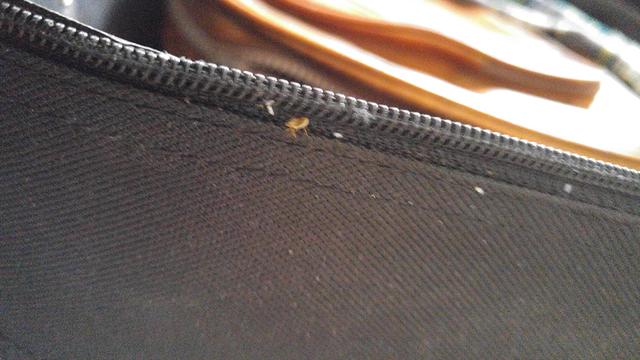Bed bugs infest senior housing - Bed bug control and removal in Metuchen
Challenge
I am responsible for handling all of the pest control needs for one of our major commercial accounts, a senior housing development in Metuchen. While conducting a routine inspection, I was informed by the property manager that a resident had recently complained of unexplained bug bites even though she did not see any bugs in her apartment. Immediately, I put everything else on hold. Any time that I am called to investigate a home or apartment where the occupant has bug bites, I prepare for the worst case scenario: A bed bug infestation. While bed bugs can be found anywhere, they are often a problem in high density housing where a large number of people live and sleep — places like apartments, dormitories, and nursing home facilities. It is important to treat bed bug infestations early because as their populations grow, these parasites will soon spread to other units looking to feed on the blood of other hosts. The objective when treating bed bugs is containment. I want to keep the infestation as localized as possible until it is resolved.
Solution
So, with this complaint as my number one priority, I grabbed my trusty LED flashlight and prepared myself for a systematic inspection to determine the type and scope of any insect infestation. Because bed bugs feed exclusively on human blood, and prefer to feed when we are stationary, they often bite at night while we are sleeping. So, unless I’m told where bugs have been seen, I like to begin my inspection in the bedroom. Here, I carefully removed the linens from the bed and the pillow cases from the pillows so as to not disrupt any insect activity. I then lifted the mattress and box-spring to see what was lurking below. I inspect not only the bed itself, but also the immediate area for potential bed bug hiding spots. With this inspection, I turned over the bed frame and night stands, checked the curtains, and even opened up the electric outlet plates to see if there was any bug activity behind them. Bed bugs are masters of stealth. They can and will hide in the smallest of places — even in the stitching holes for mattresses. When inspecting, I’m not just searching for live bed bugs. Especially during the early stages of an infestation, they are not so easy to locate. I am also looking for the tell-tale signs of bed bug activity like skin castings and fecal spotting. Technicians at Cowleys follow strict bed bug protocols that we know, from our experience, are successful. With bed bug infestations, you must be meticulous and detail-oriented. We stay on top of the pest control industry's current treatment protocols and constantly communicate amongst ourselves to learn from the experience and successes of each other when treating these bugs.
My patience during the inspection paid off. This unit did, in fact, have a bed bug infestation. I found not only live bed bugs on the mattress and box-spring, but also eggs and bed bugs on the sofa — and even bed bugs in her suitcase. Fortunately, I was there ready to begin treatment and resolve the problem. First, with my flashlight in one hand and my hepa-vac in in the other, I ran the vacuum nozzle along every square inch of the mattress and box-spring, bed frame, furniture, wall junctures, open electric outlets, sucking up eggs, bed bugs, and castings. Once completed, I applied a residual “crack and crevice” treatment to all potential harborage areas. As mentioned, these bugs stay out of sight until they are ready to feed. You have to bring the fight to them. As part of our treatment protocol, we put bedbug proof encasements on the mattress and box-spring, so that any of the bugs that escaped treatment and hiding in the bed are trapped and can no longer bite anyone.
At Cowleys, when it comes to bed bugs, it's not just a "one and done" treatment. Bed bugs are notoriously resilient insects. We don’t stop until the infestation is definitively resolved — and that means no more bed bugs, no more signs of bed bug activity, and no more bites. After the initial treatment, I’ll return in two weeks for a follow-up inspection and light treatment. Another follow-up is scheduled three weeks later. Dealing with bedbugs can be very difficult and takes perseverance. Successful bed bug eradication is a multi-stage process that takes multiple treatments over a few weeks. Be wary of any pest control service that tells you otherwise. At Cowleys, our bed bug specialists carefully and thoroughly inspect and treat every customer’s home as if it were our own. For us, providing the best service possible means that we don’t consider the job done until the infestation is gone for good. This resident told me that this bug infestation and the unexplained bug bites had been a frightening “nightmare” for her. She was constantly worried and and was even afraid to sleep in her own home. She was so thankful that I was there to get started on the infestation and that her bug problem would soon be over. These instances of helping someone out of a difficult, stressful insect infestation is what makes my job so rewarding.

